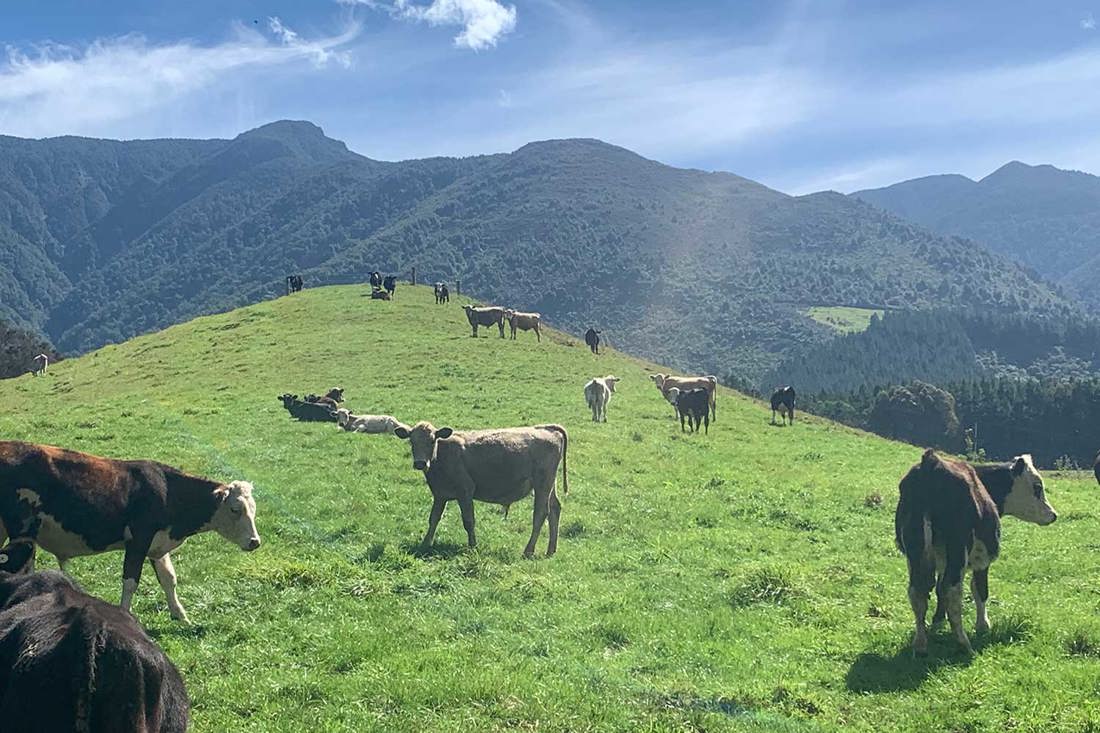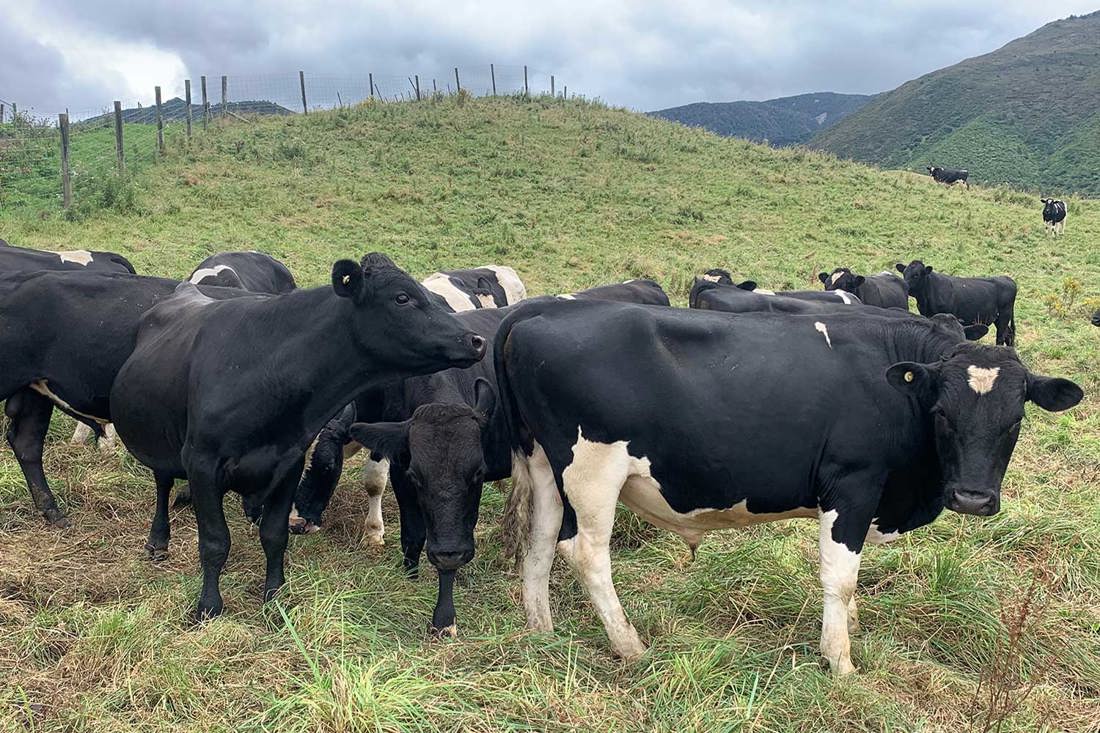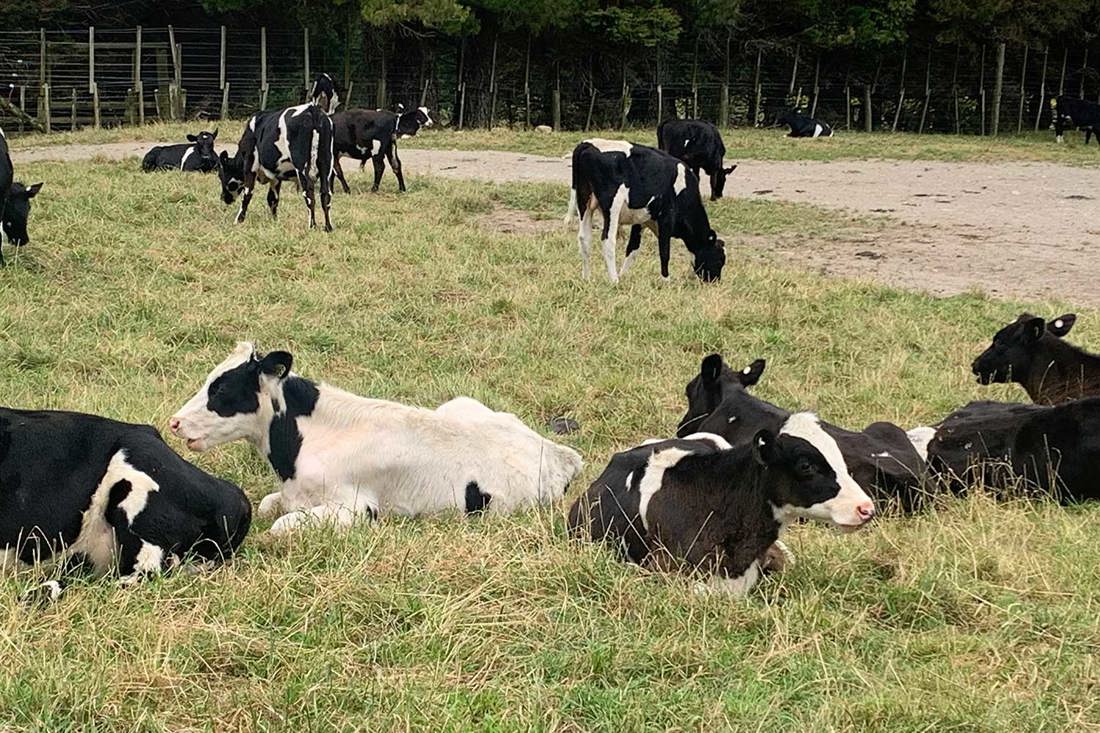Dairy Calf Opportunities, New Zealand Super Fund, FarmRight
6 min read
Each year the New Zealand Super Fund (NZSF) Rural Land portfolio, managed by FarmRight revisits their mating programmes and farm setup to look at how they can improve calf-rearing practices. The cyclone in 2023 created some unexpected obstacles for NZSF’s Hawke's Bay beef operations. This created a unique opportunity for some creative problem-solving, and bulls were sold earlier than planned, at 18 months old. Read more on how NZSF and FarmRight are looking to increase dairy beef production and meet business requirements and goals.
DairyNZ encourages dairy and beef farmers to consider breeding and rearing quality dairy calves to go into the beef supply chain. Seventy two percent of dairy farmers already use beef genetics to improve the value and performance of calves that are surplus to requirements for their dairy business. Some farms are already adapting their systems and management to further increase the value of their surplus calves.
NZSF are taking a steady and calculated approach to changing its dairy and beef farm systems to increase beef production, create a closed border operation and reduce the bobby calf footprint. Over time, their calf strategy is to rear more calves from dairy cows for beef production in a closed grazing system. NZSF aims to operate a closed system for grazing, beef production and dairy production to improve farm practices to achieve the best outcome for farm sustainability and animal welfare.
We have achieved quite a bit in the last 12 months. The cyclone has made us creative and rethink some of our beef operations.
Dan Jolly
FarmRight Investment Manager

Hawke's Bay calves from Canterbury dairy operations
NZSF aims for a 22-25 percent replacement rate for their dairy herds.
All herds, in both the North and South Island, are Friesian-cross cows. The mixed-aged cows are mated with Friesian, Jersey, Kiwi-cross and beef semen by artificial insemination and natural mating with predominately Hereford bulls. Most rising two-year-old heifers are mated by Jersey bulls with some of the better-quality heifers mated by artificial insemination.
Previously, on the South Island farms, high-BW cows were selected and artificially inseminated using sexed semen for the first three weeks with no intervention, such as CIDR. Since trying sexed semen, FarmRight has found that the solution does not quite fit their farm system’s needs. The conception rates were lower than expected and the management change required did not suit. This year, FarmRight have used different beef breeds like Charolais over lower BW cows.
Approximately 50 percent of animals selected for beef rearing are reared on NZSF dairy farms and the other 50 percent are sent to contracted rearers at 5-15 day old until weaning at three months (105 kg live weight). After weaning, all beef calves are finished on the FarmRight beef operation in Hawke's Bay.
From September to January, around 2000 bulls arrive at the NZSF beef operation with an average live weight of 105 kg. Typically, they will be processed two years later as rising three-year-olds at an average live weight of 585 kg. On average, the animals have a 22 kg live weight gain each month for the 22–24-month period.
At peak pasture growth times between September and November, average daily animal growth rates can be as high as 2.5 kg live weight. Winter intakes are approximately 2 percent of body weight and increase to 4 percent at balance date in the spring.
The pasture system is aligned with dairy pasture management using ‘techno farming’. The approach is “right animal in the right cover at the right time”, pasture walks are recorded weekly, and the systems are adjusted for seasonal growths and round length. A combination of permanent and temporary fences divides the farm into small paddocks, which makes it possible to match round length to growth rate, resulting in increased pasture growth.
FarmRight has a tailor-made animal health plan with local vets and FarmRight’s consultancy division.

Canterbury and Te Aroha rising one-year olds grazing on the Hawke's Bay beef operation.
NZSF have ambitions to increase the percentage of calves reared but they recognise it is going to take time and FarmRight must look for ways to manage assets to ensure sustainable returns while steadily increasing calves reared.
They want to stabilise the current operations by focussing on live weight gains and carcass weights to drive profit on the beef operations, and this includes techno grazing.
In 2023, the cyclone and adverse weather impacted NZSF operations, forcing them to think differently. They lost all communication with the team in Hawke's Bay for three days and had no access to the farms. FarmRight made changes after the cyclone and is more prepared for the beef programme.
During this time, FarmRight had to stop sending bulls from the South Island operation to the Hawke's Bay beef operation. Additionally, daily weight gain on the bulls at the beef operation was not on target because of the cyclone’s impact on feed (there was a significant reduction of pasture available) and it impacted the grazing management plan. As a result, they sold 18-month-old bull calves to reduce feed demand and did quite well on profit.
This did result in them now being about 150 head short for the three-year-old bulls that they wanted to process. Increasing beef stock value meant bulls were never replaced. To date, the prices have held up well as there is a lot of feed around and other farming operations are holding onto stock to see what the schedule does.
FarmRight learned from this experience and did something a little bit different in the 2023-24 season. They will continue with the rising three-year-old bull programme and decided to do another similar 18-month-old bull programme to see how that would compare under more normal circumstances. So far, good weight gains have been achieved and the farm is about to start selling them. But they still must fill the current stock shortage and buy stock for next year.
We are constantly asking, what are our potential roadblocks and how will we navigate that when we get to it? But some things that happened, we never considered.
Dan Jolly
Farm Investment Manager
NZSF and FarmRight want to continue to find a home for its beef stock by investing in beef operations while remaining profitable. Over the next few years, they will optimise calf rearing and beef-on-dairy genetics to increase calf value and live weight gains.


Now’s the perfect time to check in, plan, and set up for a strong season. We’ve pulled together smart tips and tools to help you stay ahead all winter long.
Whether you prefer to read, listen, or download handy guides, we’ve got you covered with trusted tools to support your journey every step of the way.
Put our proven strategies and seasonal tools to work. Boost production, support animal health and watch your profits hum.
Tools that are backed by science, shaped by farmers and made for this season.
That’s Summer Smarts.